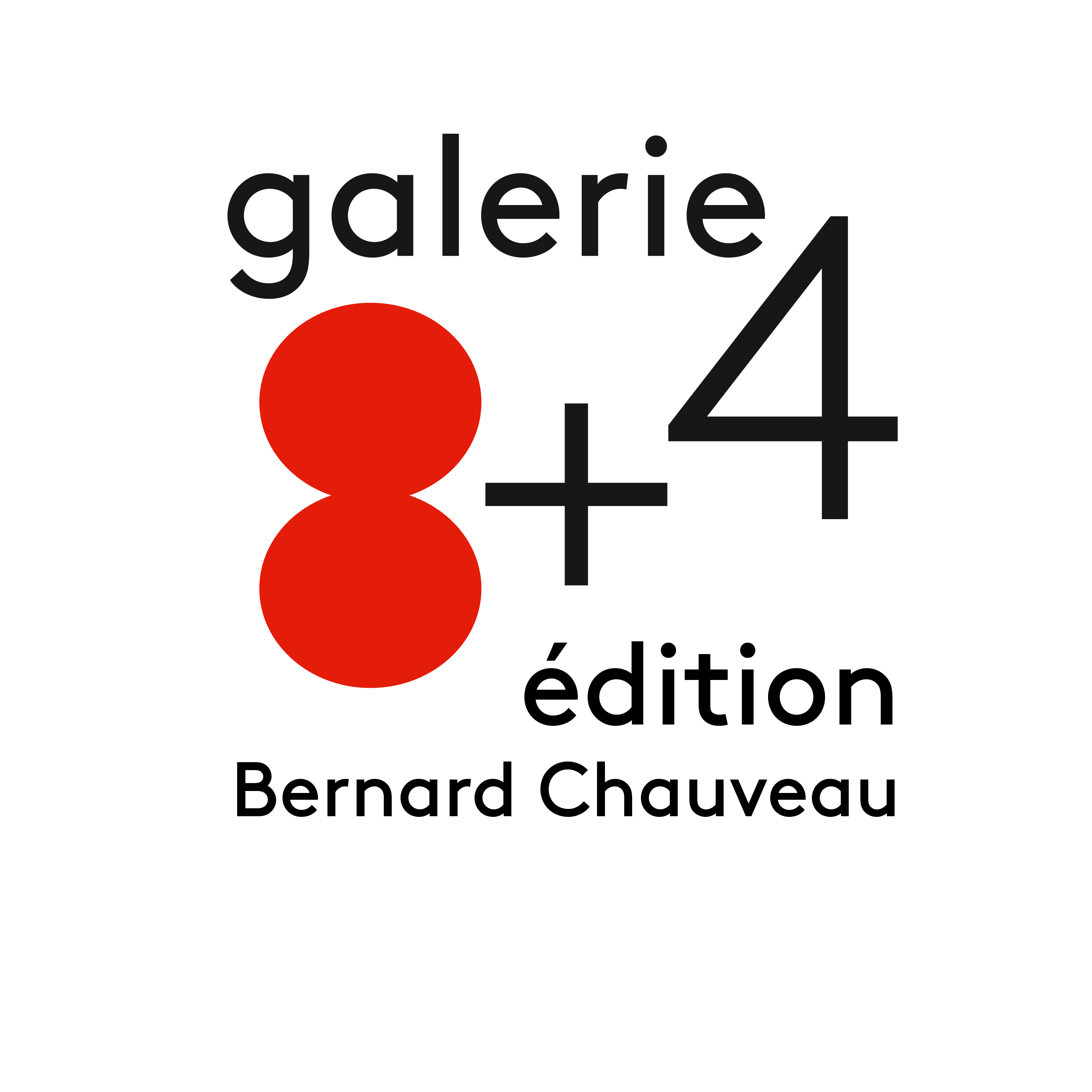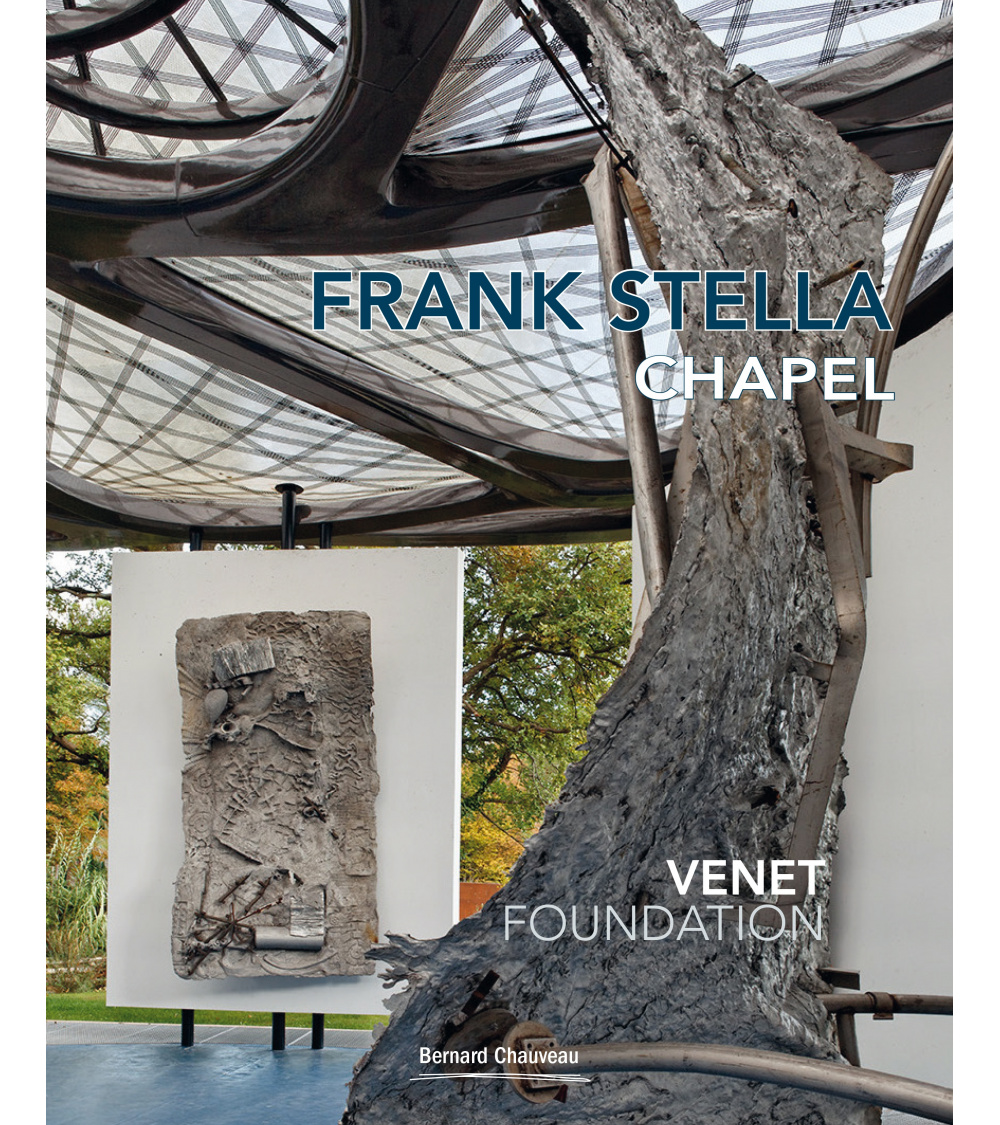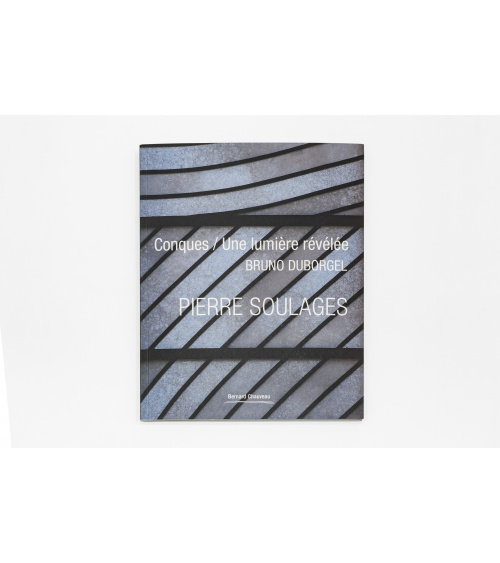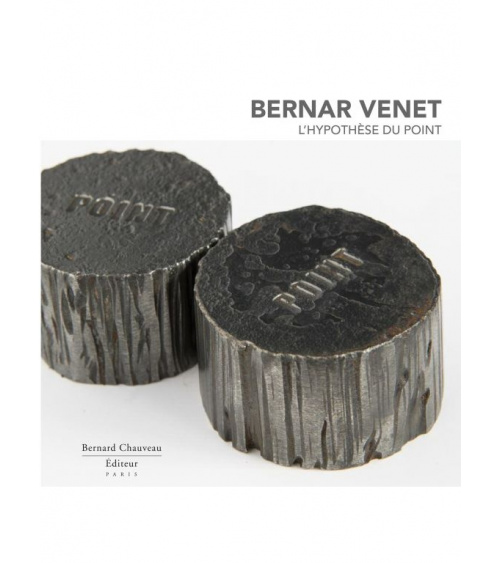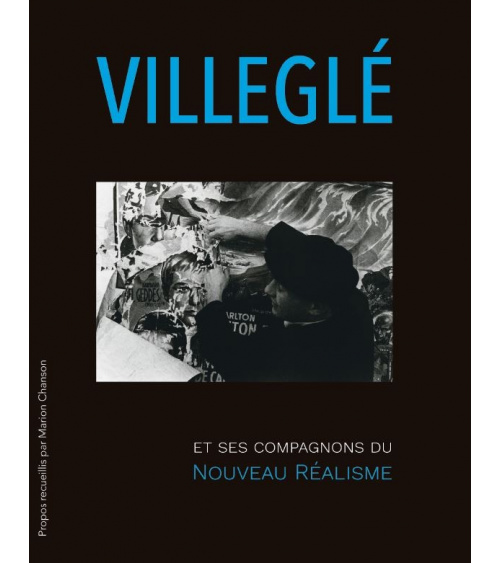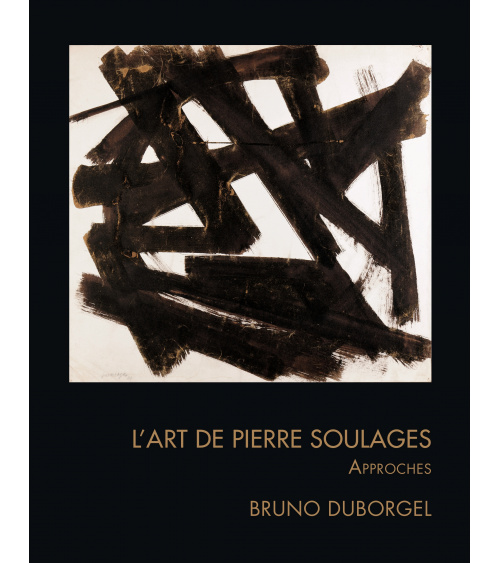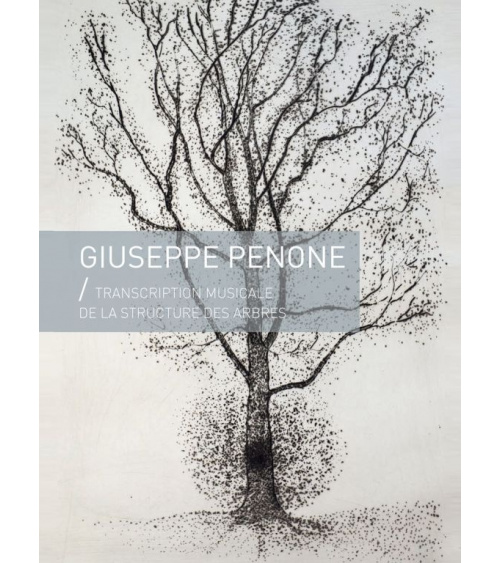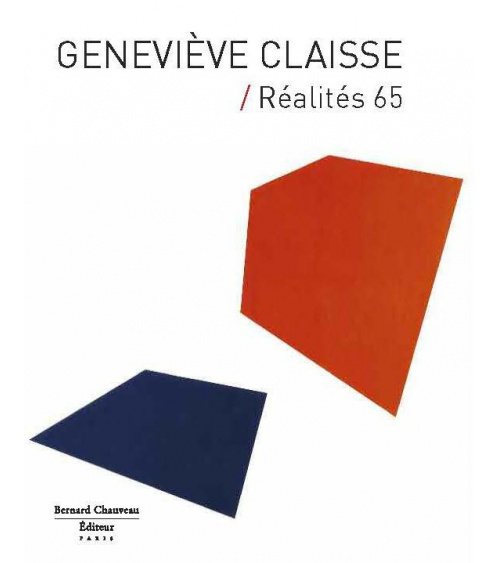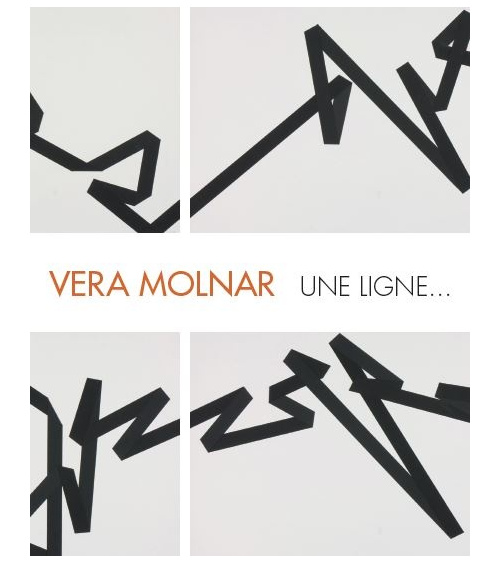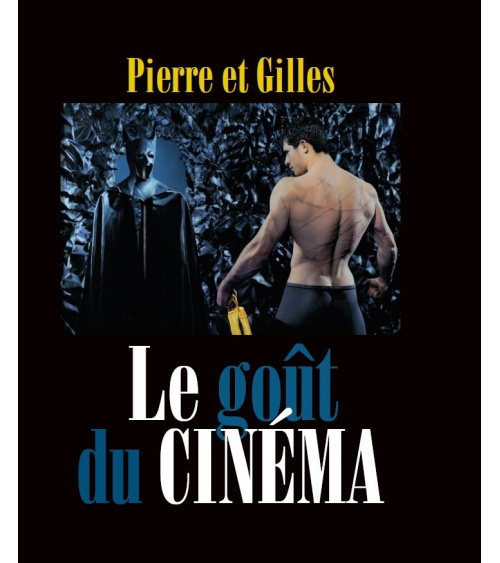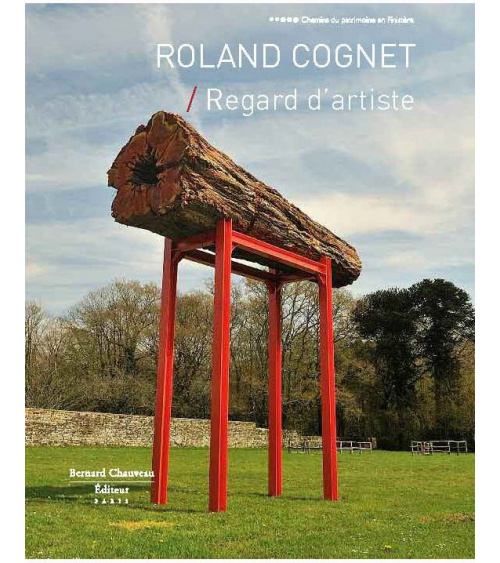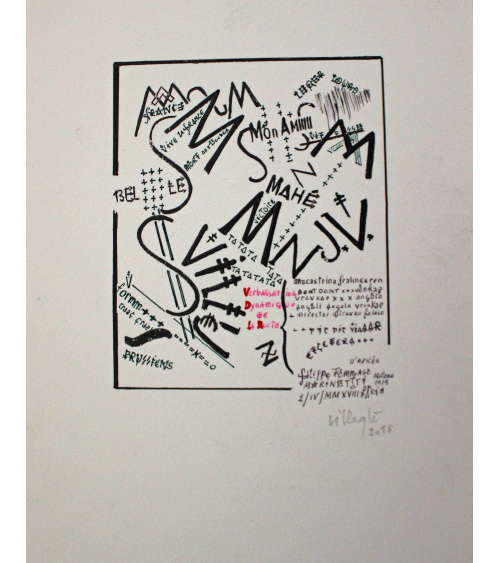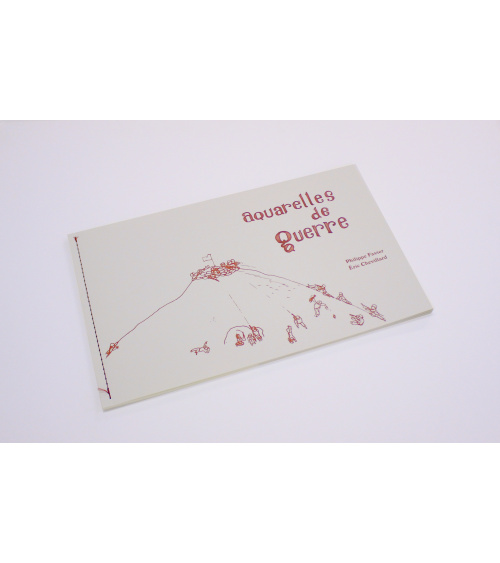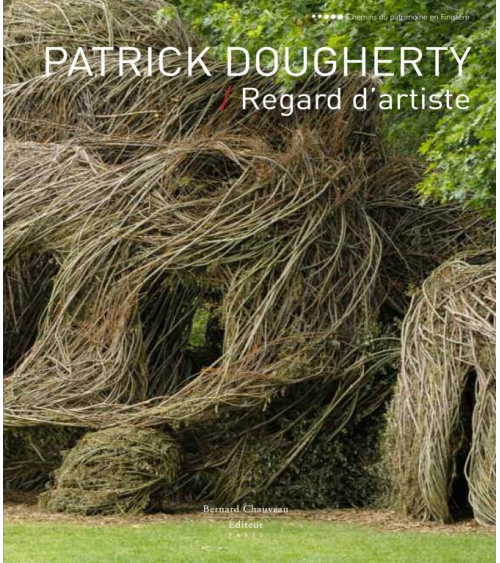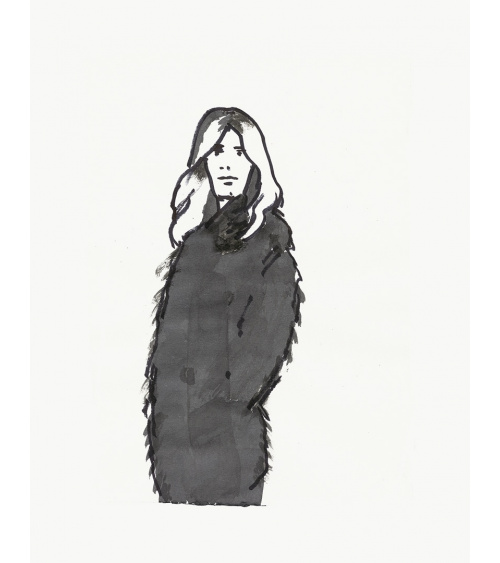Frank Stella Chapel
Invited by the Venet Foundation, Frank Stella has created Stella Chapel, an outdoor architectural installation intended to host the six three-dimensional artworks of his Near East series.
The Stella Chapel is a total work of art that combines architecture, volume, sculpture and meditation. Invited by Bernar Venet, Frank Stella has created his first architectural installation intended to host the six three-dimensional artworks of his Near East series. The appearance, circular shape and harmonious proportions of this pavilion recall the follies that adorned botanical gardens in the 18th century while paying a tribute to other historical creations of contemporary art such as the Rothko Chapel, in Texas. The six monumental sculptures presented in this book are part of the Near East series (1991) and considered to be among Frank Stella’s most notable artistic endeavors. Particularly powerful and suggestive, these high reliefs bring spectators beyond archeological excavations, in a tragic universe full of buried or melted cities and monuments like Chernobyl or The World Trade Center.
Data sheet
- Number of pages
- 56
56 - Size
- 21 x 26 cm
21 x 26 cm - Language
- Bilingue Français / English
Bilingue Français / English - ISBN
- 9782363061652
9782363061652 - Publication date
- 2016
2016
Stella (Franck)
Frank Stella was born in 1936 in Malden, Massachusetts. He studied painting at the Phillips Academy in Andover and at Princeton University, graduating in 1958 with a degree in history. After his graduation, Stella moved to New York and completed his renowned series of Black Paintings. Regarded as a precursor to Minimalism, these paintings garnered immediate recognition: four were included in New York’s Museum of Modern Art’s Sixteen Americans 1959 exhibition, and Alfred Barr, the museum’s director, purchased one for the permanent collection shortly thereafter.
In 1960, Stella’s Aluminum Paintings, his earliest shaped canvases, were exhibited in his first solo exhibition at the Leo Castelli Gallery in New York, and 1961 brought his first solo exhibition abroad at Galerie Lawrence in Paris. Throughout the 1960s and 70s, his work was included in a number of significant exhibitions that proved to define the art of the time, including: Geometric Abstraction (Whitney Museum of American Art, New York, 1962); Toward a New Abstraction (The Jewish Museum, New York 1963); The Shaped Canvas (Solomon R. Guggenheim Museum, New York, 1964-65); Systemic Painting (Solomon R. Guggenheim Museum, New York, 1966); XXXII Venice Biennale (1966); Dokumenta 4 (1968); New York Painting and Sculpture 1940-70 (Metropolitan Museum of Art, New York, 1970); and Structure of Color (Whitney Museum of American Art, New York, 1971).
Stella continues to produce work in series, and in the 1960s he followed his Black and Aluminum canvases with his Copper Paintings, Concentric Squares, Mitered Mazes, Irregular Polygons, and Protractor Paintings. This time was also punctuated by his introduction into printmaking in the mid-1960s, and his designs in 1967 for the set and costumes for Scramble, a dance performance choreographed by Merce Cunningham.
In the 1970s, while finishing work on his Protractor and Saskatchewan series, Stella increasingly moved towards three-dimensionality with the high relief of his Polish Village series (named for the 17th-19th century wooden synagogues destroyed in Poland by the Nazis). In 1970, at the age of 34, Stella became the youngest artist to receive a full-scale retrospective at MoMA.
Stella continued his prolific pace throughout the 1970s and 1980s, bringing forth such series as the Brazilian, the Exotic Bird, the Indian Bird works, Circuits, Shards, and Cones and Pillars. With these works, Stella expanded on this new direction with new technologies. With the Brazilian series, he painted on etched metallic sheets in fan-like shapes, and with the Exotic Bird series, he combined honeycomb aluminum with worked ground glass surfaces.
In 1985, Stella began work on the the Wave series, which in 1988 became known as the Moby Dick series, a set of 266 painted metal reliefs, collages, sculpture, prints, and a block long mural (at least one unique work for each of the 138 chapters of Herman Melville’s novel). In 1987, Stella was given an unprecedented second retrospective exhibition for a living artist at MoMA.
In the 1990s, Stella began work on his Imaginary Places series and started the Heinrich von Kleist series. One of his largest outdoor sculptures, completed and installed in 2001, is Washington D.C.’s National Gallery of Art’s Prince Frederick of Homburg, which takes its title from one of Kleist’s dramas.
Stella has worked on such projects as Toronto’s Princess of Wales Theater murals, (1992-93), including the auditorium ceiling dome, proscenium arch, walls of lounges and lobbies on four levels of the theatre, and the outside back wall of the fly tower. The paintings, covering 10,000 square feet are believed to comprise one of the largest mural installations of modern times.
As an architect, he has completed proposals for museums in Gronigen, Dresden, and Buenos Aires. The Kleist series also gave title to The Broken Jug, a band shell composed of twisting aluminum that forms a proscenium which reaches a height of thirty-seven feet and spans more than fifty feet. In the spring of 2007, The Metropolitan Museum of Art exhibited Frank Stella: Painting into Architecture and Frank Stella on the Roof.
In his more recent work, the painted sand cast metal pieces of the Near East series and the twisted steel constructions of the Bali series and the Scarlatti K series, Stella continues to work freely in three dimensions.
Stella is the author of many essays and articles exploring painting and abstract art in particular. In 1983, he was appointed the Charles Eliot Norton Professor of Poetry at Harvard University; In 1986, those lectures, titled Working Space, were published in English, French, and Japanese.
Stella is the recipient of many honors and awards. He won first prize in Tokyo’s International Biennial Exhibition of Paintings in 1967, and in 1979, he received the Claude M. Fuess Distinguished Service Award from Phillips Academy. He was the recipient of both the Skowhegan Award for Painting and the Mayor’s Award for Arts and Culture in 1981. In 1985, he received the Award of American Art from the Pennsylvania Academy of Fine Arts. He has received honorary degrees from Princeton University, Bezalel Academy in Jerusalem, Dartmouth College and the Friedrich Schiller University in Jena, Germany. In 1989, he received the Ordre des Arts et des Letters from the French government. In 1992, he was awarded the Barnard Medal of Distinction. He was presented with the Gold Medal for Graphic Art award by the American Academy of Arts and Letters in 1998. In 2000, he became the only American artist to have been given a solo show at London’s Royal Academy, of which he is a member. He was presented with the Gold Medal for Graphic Art award by the American Academy of Arts and Letters in 1998. Stella won the Gold Medal of the National Arts Club in New York (2001). In 2009, he was the recipient of the Julio Gonzalez Prize for Lifetime Achievement in Arts in Valencia, Spain, and in the same year, was awarded the National Medal of Arts by President Obama. In 2012, the Kunstmuseum Wolfsburg in Germany exhibited a retrospective of Stella’s works. A retrospective of his works was on exhibition at the Whitney Museum of Art in 2015 through February 2016; and it will travel to Fort Worth and San Francisco. The Madison Museum of Contemporary Art in Wisconsin is exhibiting a retrospective of Stella’s extensive work in prints through May 2016, in conjunction with the publication of the revised and updated catalogue raisonné. The exhibition will travel to the Addison Gallery in Massachusetts in 2017.
Frank Stella lives and works in New York City.
No customer reviews for the moment.
